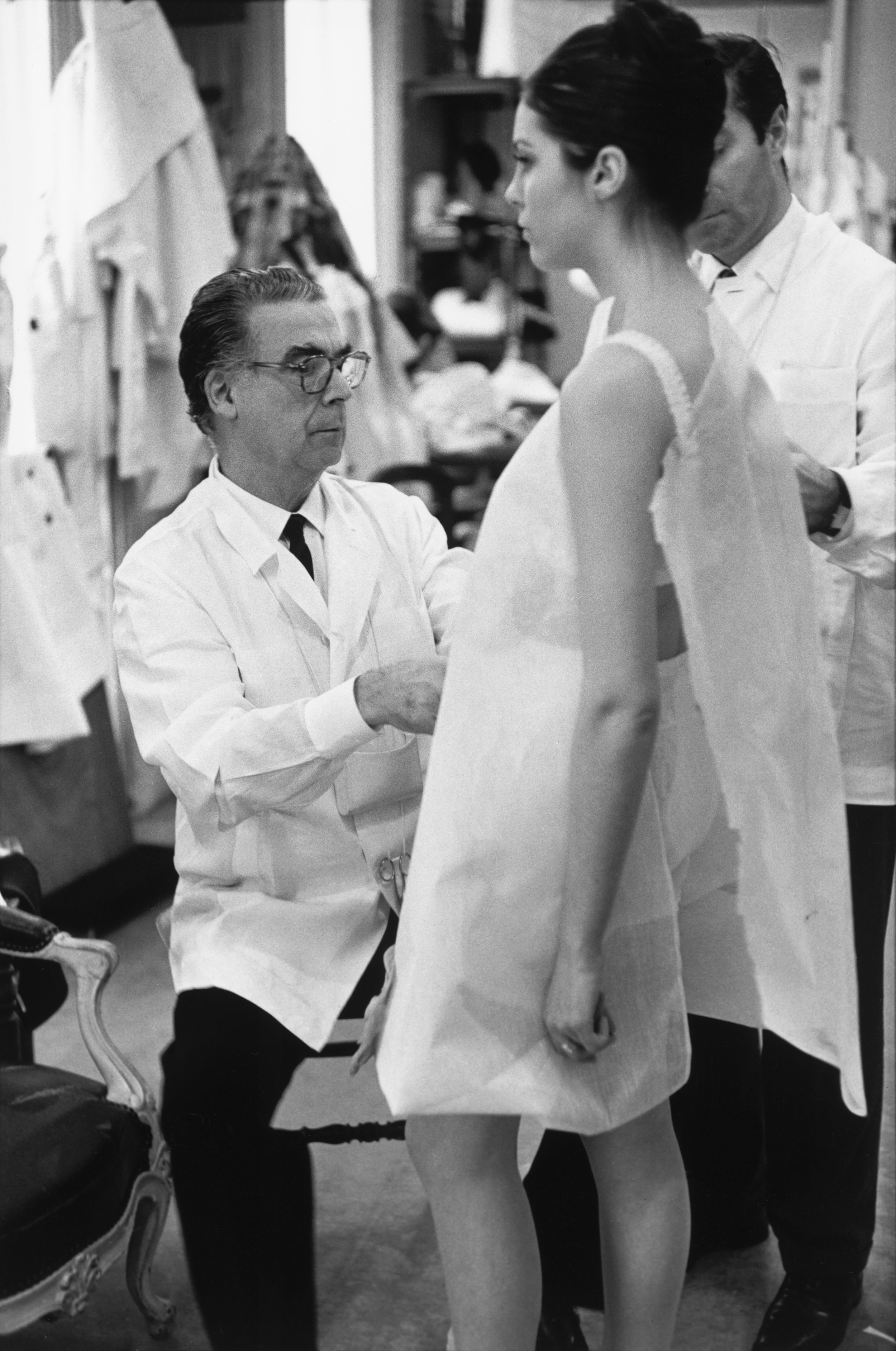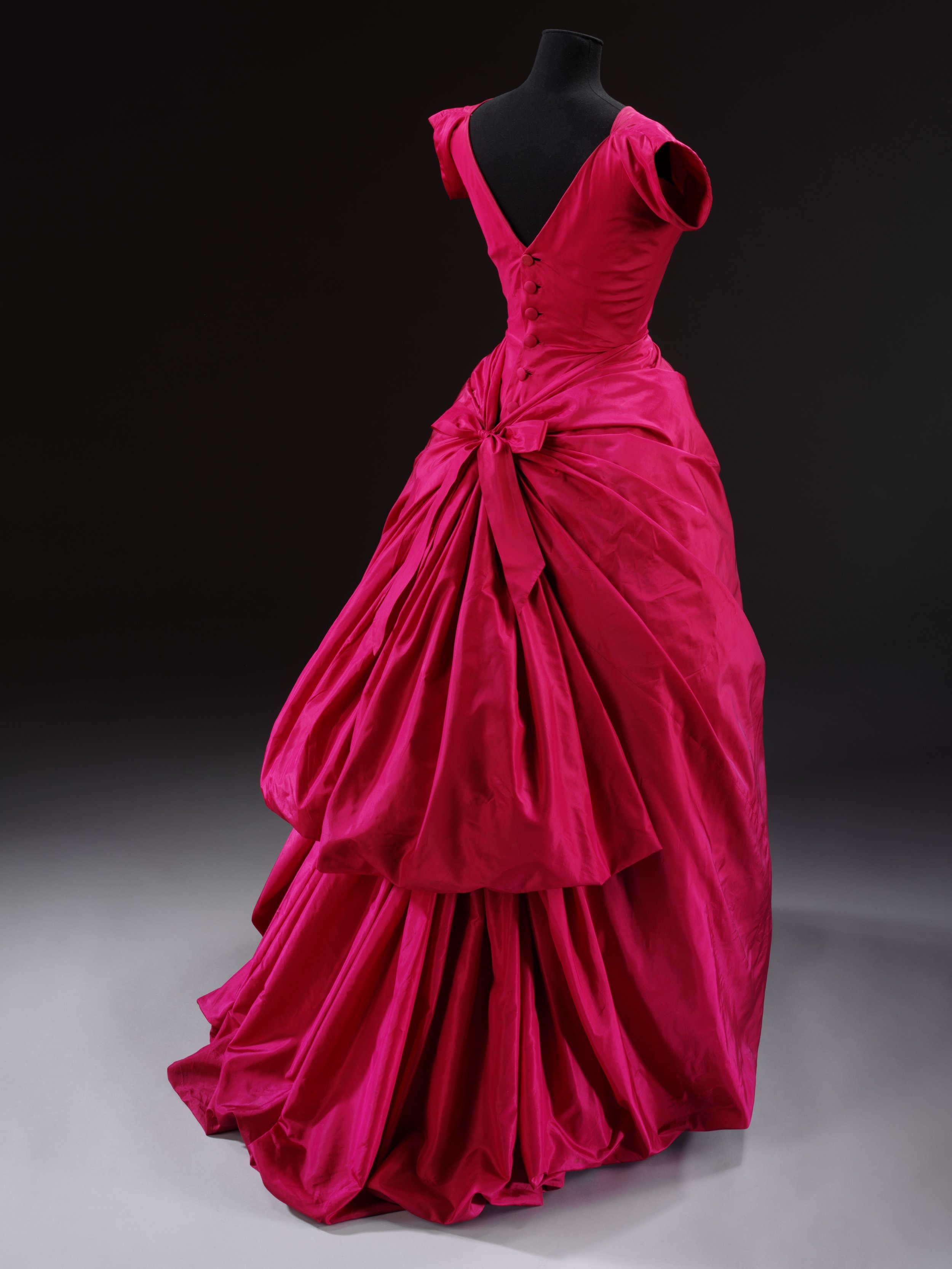Exhibition Review: Balenciaga: A Tale of Two Stagings
Victoria & Albert Museum (May 27th, 2017 - Feb 18, 2018) and Musée Bourdelle (March 8th - July 16th, 2017)
“Haute couture is like an orchestra whose conductor is Balenciaga. We other couturiers are the musicians and we follow the direction he gives,” Dior once proclaimed. At the height of his own short career and in the midst of the golden age of couture, Dior’s words echo a widespread sentiment about the Spanish designer amongst fellow couturiers, the fashion press and a flock of devoted (and wealthy) clients. In an industry cyclically chasing what’s new and who’s hot, Balenciaga managed to garner the respect of his contemporaries and designers to the present day, coming to be known as The Master of fashion. So what was his secret? This year enthusiasts of Balenciaga had not one, but two opportunities to consider the designer’s mastery in major exhibitions in London and Paris.
LONDON
As their major fashion exhibit of the year which will last nearly nine months, the Victoria & Albert Museum’s show represents their first retrospective of the designer’s work. Housed within a tall white circular structure inside the museum’s domed fashion gallery, the entrance into Balenciaga: Shaping Fashion feels as though one is entering an arena, setting a distinctive tone for the display of fashion within the museum. 100 years after Balenciaga first set up shop in San Sebastian, Spain and 80 years after the opening of his hallowed Parisian atelier, the V&A drew on their extensive collection and focused on pieces from the 1950s and 1960s, when Balenciaga was considered to be at his peak, “to reveal what makes Balenciaga’s work so exceptional and how it continues to shape fashion today”.
The first floor of the exhibition sets a winding path past wood panelling display cases that group garments together into themes ranging from silhouette, creative inspiration, and clientele. With exceptionalism as the focal point of the exhibition, it was hardly a surprise that from the very outset Balenciaga’s exacting craftsmanship was emphasized as essential to his success with clients and gaining the esteem of colleagues. The first section of the exhibition takes visitors inside Balenciaga’s atelier on Avenue George V in Paris. Unlike most other designers, for Balenciaga, the textile was always the point of the departure, impacting the shape and design of the final garment. Materiality dictated methodology, and viewers were invited to consider the design process from the first fabric swatches and sketches, to photos of the house models in the finished dress, displayed alongside the garment itself.
Balenciaga’s training as both a tailor in Seville, and later as a dressmaker, gave him a keen understanding of the manipulation of cloth. He forged close relationships with industry artisans, and visitors learned about Balenciaga’s collaboration with Swiss textile manufacturer Abraham, notably with new synthetics materials gazar and zagar. These unwieldy fabrics gave way to some of Balenciaga’s most eccentric designs, including the 1967 Envelope Dress, on display at the entrance of the exhibition. Another display case and video highlights his work with renowned French embroidery atelier Lesage, which resulted in such creations as a wholly unexpected and striking pink ombre evening coat from 1967, embellished in pink feather-shaped sequins, intricate beading and Swarovski crystals.
Construction is something that is difficult to convey within the museum, with clothes protected behind glass cases, with only a front or back view of the garment possible to behold. Examination of the technical feats are obscured within the garment, and a couturier of Balenciaga’s caliber gives next to no hints at the execution. The highlight of the show then, are artist Nick Veasey’s full scale X-rays, which exposed the inner secrets of three garments, a Tulip dress from 1965, Balenciaga’s cape with one seam, and a balloon hem evening gown from 1954 in a dazzling fuchsia. This technology, traditionally reserved for the body, is unexpectedly applied to dress with fantastic results, revealing ingenious elements of Balenciaga’s designs such as weights inside of seams and fastenings at knees to keep the volume of skirts in place.
Though the exhibition boasts over 100 garments and an additional 20 hats (the finishing touch to any Balenciaga suit), curator Cassie Davies-Strodder devotes half the exhibition to exploring Balenciaga’s legacy, transitioning from an examination of the physical shapes of Balenciaga to his figurative shaping of contemporary fashion today. In an interview with Dazed Magazine, she notes “The more I look at Cristóbal Balenciaga’s signature designs, the more I see his influence everywhere.”[1] The airy second floor, entirely white with freestanding glass cases, gives ample space to revisit the central tenants of Balenciaga’s design, and present examples of contemporary designers from the 1960s to today who share similar aesthetic sensibilities. Identifying minimalism, shaped volume, perfectionism, new materials and innovative pattern cutting as Balenciaga’s hallmarks, upwards of 25 designers are represented. Some, including Givenchy, Courreges and Rabane, trained under Balenciaga, while works by Chalayan, Issey Miyake, Rick Owens, Gareth Pugh and McQueen and many others are also displayed. Quotes printed on the circular walls from many of the designers validate their selection as having been influenced by Balenciaga. While I certainly enjoyed walking through the spacious upper gallery, I did question the curatorial decision to devote so much space to other designers’ works when the first floor felt cramped as visitors jostled for position to see the title designer’s works. However, the extensive look at Balenciaga’s legacy offers perspective on the designs of the first floor, reinforcing just how innovative and influential Balenciaga’s clean lines and dramatic shapes were, and how many of his designs would not be out of place in avant garde fashion today.
PARIS
The Palais Galliera’s exhibition Balenciaga: Oeuvre au Noir, meanwhile, similarly places great emphasis on Balenciaga’s craftsmanship. Hosted at the Musée Bourdelle, curator Veronique Belloir uses the narrowed focus of black garments to spotlight the materiality of Balenciaga’s work, looking closely at how his “artistry exploited fabrics…and by what alchemy these elements became clothes.”
The setting of the Musée Bourdelle, in the atelier of French sculptor Antoine Bourdelle, has been the site of one other fashion exhibition staged by the Palais Galliera, in a fabulous exploration of the designs of Mme. Gres in 2011. In principle, the sculptural elements of Balenciaga’s designs should be in good company amongst Bourdelle’s works, an apt pairing of fashion and sculpture. Instead, I found the opening of the exhibition lacking impact, with only a few mannequins in each of the first rooms of Bourdelle’s atelier. The rich black clothing, sometimes mounted on black backgrounds, are stark in contrast to the creamy sculptures, leaving them feeling somewhat intrusive. Moreover, the numbered mannequins are void of biographical details, which are listed on tall signposts tucked in the corners of rooms, leaving viewers challenged to consider both construction and provenance at once.
The most curious curatorial decision is the placement of four mannequins within raised back boxes in the fourth and fifth rooms of the atelier. These boxes require viewers to lift back a front curtain to reveal the garments within. While I can sympathize with the challenges of light exposure in the bright atelier room, the result is a struggle to examine the garments in the dark boxes while simultaneously opening the curtain. Within the boxes are beautiful examples of Balenciaga’s “Abstract Volumes”, including another Envelope dress and a fabulous voluminous evening cape in gazar.
The exhibition gains significant momentum, however, on the lower level. A hallway leading to the lower gallery showcases another collection of eclectic headwear, sketches and model photographs. And while the upper rooms of the atelier contain 15 garments, nearly 50 garments and some jewelry are on display in the gallery downstairs. Here, Belloir’s focus of black amplified the interplay of wool, velvet, lace, satin, taffeta, seersuckers, embroidery, sequins, fur and feathers. By removing the distraction of color, the various themes of draping, sheen, color and transparency were richly developed visually and through the accompanying narrative text. Balenciaga’s ability to execute austerity, youthful femininity, elegance and mourning through balancing the selection of textiles to the silhouette, was a clear testament to his skill as a designer.
When Women’s Wear Daily ran the headline “The King is Dead” upon Balenciaga’s death in 1972, for many in the fashion industry this signalled the end of haute couture. Indeed, Balenciaga’s retirement some four years earlier had been a sign of the fashion industry’s slow shift towards ready-to-wear, and the V&A’s exhibit acknowledges that Balenciaga’s relevance was questioned in this new age, despite his flourishing business. The fundamentals of Balenciaga’s designs however, beautifully demonstrated in these two shows, are a reminder of the timelessness of his design principles, his sculptural minimalism and ingenious construction. Because some things never go out of fashion.
Notes
[1] http://www.dazeddigital.com/fashion/article/36091/1/the-shaping-fashion-curator-on-balenciagas-radical-design
Thumbnail Image Credit
Cloqué matelassé lamé Lurex. Collection Palais Galliera. Copyright Julien Vidal/Galliera/Roger-Viollet









